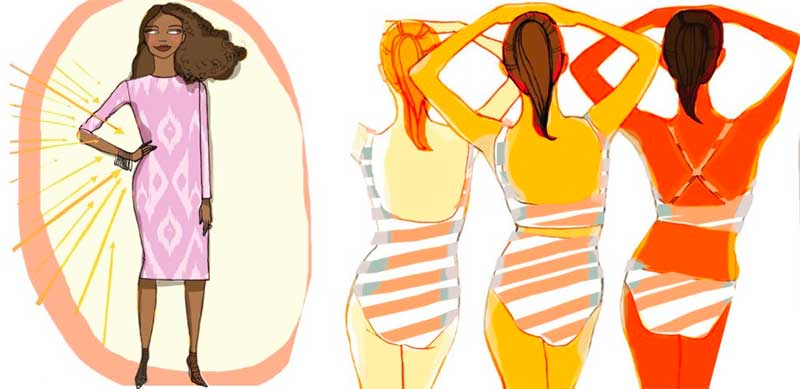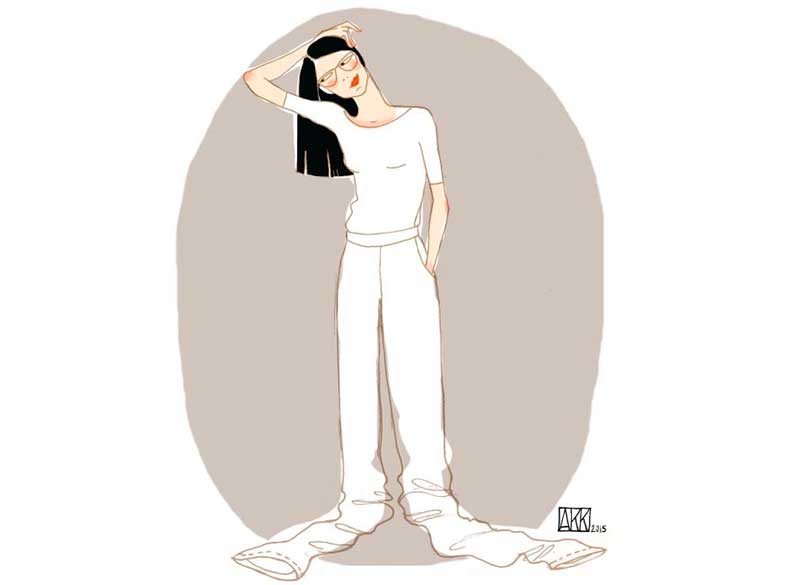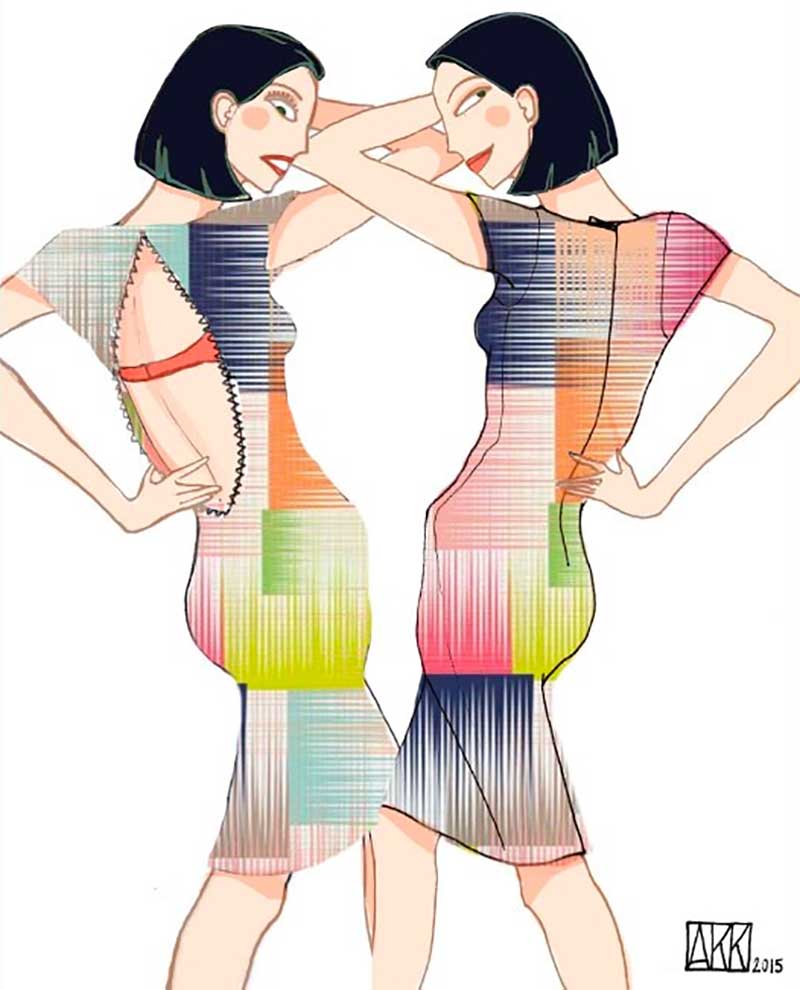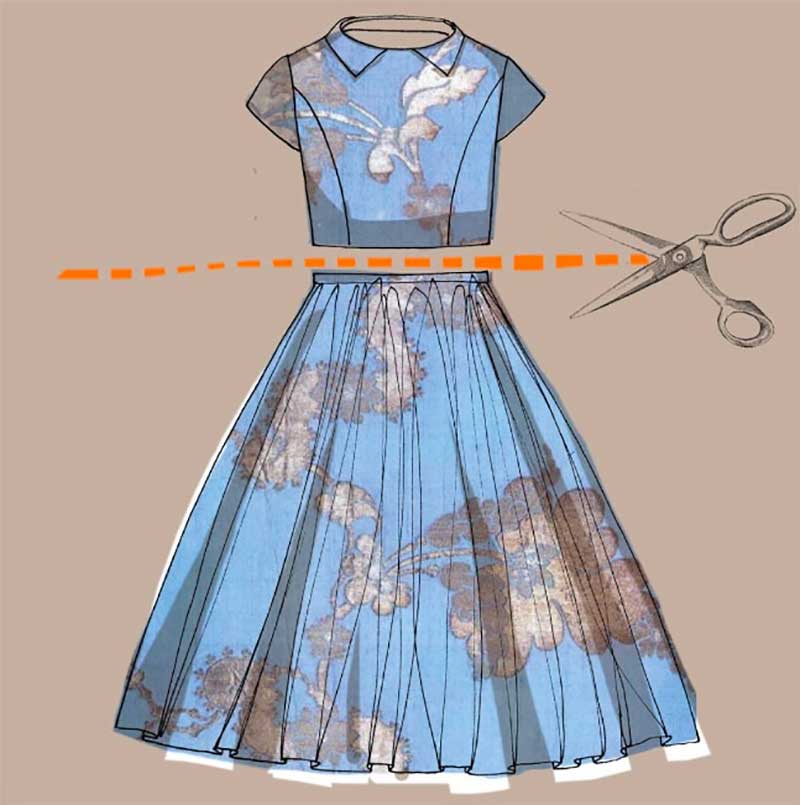
If you don’t consider your local tailor an integral element of your shopping process, you may be missing out on a world of wardrobe possibilities. These garment game-changers can do everything from easy fixes to near miracle repairs, like shortening your too-long jeans (why do designers seem to think we’re all six feet tall?), turning an ill-fitting—but still unique—vintage dress into a one-of-a-kind masterpiece, or adding a cup size to that bikini you’re dying to wear. Yes, tailors can work their skills to make the most innovative, inspired, and unexpected alterations to adjust, repair, or totally transform some of the most treasured (or neglected) items in your closet.
To break it all down, we picked the brains of two of the most sought-after tailors in New York. The first, Irene Cherniakhovsky, is the owner of Silhouettes & Profiles and regularly handles alterations for Jason Wu and Rodarte runway shows and even restored pieces for the Met’s Poiret-themed Costume Institute exhibit in 2007. The second is John Mahdessian, president of Madame Paulette. This Upper East Side mecca is where socialites, editors, and all-around fashion notables send their designer pieces, delicate vintage treasures, and even Louis XIV armchairs to be expertly tailored, dry cleaned, and/or restored.
Read on to find out what can and can’t be done (the answers may surprise you), what to ask for, whether the job is worth it, and a general idea of how much it will cost*.
*Just a friendly note that all pricing is approximate and will differ based on tailor, fabric, materials, required work, and geographic location.
Hemming

The number-one rule of thumb for getting anything hemmed? Whether it’s a pair of pants, jeans, skirts, or dresses, always bring in the shoes you plan to wear with said piece for reference.
If it’s a pair of jeans, make sure that you request to keep the original stitched hem, especially if you’ve invested in a pair of designer denim. The tailor will cut the hem off, shorten the legs and stitch the original bottom back on so the color of the thread matches the rest of the jeans.
As for trousers, you can ask the tailor to replicate the original stitching—be it hand- or machine-stitched. Also important to note: Cuffed hems can be replicated after the pants are altered, and if you’ve damaged a trouser cuff, it is possible to repair; Cherniakhovsky has a creative pleating technique to hide rips and holes. “It does depend on the damage of the item,” Mahdessian says. “But with a little creativity, it is possible to repair almost anything.” So definitely shop around to get a second or third opinion.
When it comes to hemming skirts and dresses, Cherniakhovsky has her clients try on the piece to find the most flattering length. If you’re having a maxi skirt or evening gown hemmed, Mahdessian strongly stresses requesting a proper hem to match the original stitching, as opposed to a basic hem in which the material is just double-turned under and sewn in place. “That’s when you catch your heel and rip the dress,” he warns. And we cannot have that.
General pricing:
- Jeans: $8 to $25+ (for original hems)
- Trousers: $7 to $28+
- Dresses and skirts: $6 to $36+
Adding, Shortening Or Removing Sleeves

Having a tailor turn long or three-quarter-length sleeves into short or cap sleeves can totally change up the silhouette of a dress or top. Another option is to taper or narrow the sleeves to streamline the shape, the latter of which may require resetting the armhole (hence, adding to the final bill). So schedule a fitting with your tailor to figure out if it’s worth it.
Or, just take the sleeves off entirely. Although, Mahdessian warns that some blouses won’t work as sleeveless tops. If there’s a “slight indentation” in how the shoulder of the top is cut, then the final hemmed armholes will be awkwardly too far into the bodice. So the cut of the original top is the determinant of a successful sleeve removal.
Although, “more often clients ask to add sleeves to the dress,” says Cherniakhovsky. The trick is finding the right fabric, and she’s especially proud of the time she found the perfect embroidered lace to create Kate Middleton-esque sleeves on a customer’s wedding dress.
- General pricing: $7 to $20+ for sleeve shortening
Taking In Or Letting Out A Dress

Taking a dress-in is a fairly straightforward task, but Cherniakhovsky suggests asking yourself two questions before you go in and invest in the alteration. First, are you going to wear it? Secondly, is it worth it? Depending on how much work is involved to adjust, cut, and sew the garment (arms, underarms, side seams, waist, etc.), the cost could increase exponentially. So, if that thrifted dress costs $10, assess if it’s worth paying two to three times more for alterations. (Sometimes it is!)
Mahdessian also warns that dresses with draping are more difficult to take in because the draped fabric needs to be adjusted and refit as well as the seam. Ruched pieces require creativity from a tailor as well—and most likely a bigger bill.
Now, letting out can get a little tricky. First, there needs to be enough excess fabric. If that’s not an option, a good tailor will exercise some imagination by adding paneling or a gusset (a piece of fabric strategically inserted into a seam) in the sneakiest, most, uh, seamless, ways possible—at the sides, back, or wherever it complements the dress. Cherniakhovsky’s especially resourceful in finding matching fabric, sometimes using three layers of colored fabric to match the original’s hue.
Mahdessian also warns that certain fabrics and textures, like leather, aren’t conducive to letting out. For instance, with leather, the holes from the stitching (i.e., tracks) and folds at the seams will show. Ever resourceful, Cherniakhovsky fixes that issue with panels of material, embroidery, or lace-up detail on the sides of leather skirts and dresses to create more give. So talk to your tailor about options.
General pricing:
- Taking in: $11 to $55+
- Letting out: $25 to $45+; leather alterations $80+
Replacing A Zipper

Good news: Broken zippers can easily be replaced. (Although invisible zippers are a bit more difficult because the seam is so specific and the replacement has to be exact—but it’s not impossible.) It never hurts to remind your tailor that you want the same type of zipper as the original in terms of color, size, stitching, thread color, etc. Some tailors will charge additional for the zipper, so if you’re feeling control-freakish about the situation (no judgments here), go to a sewing supply store and source your own zipper. But, Cherniakhovsky warns of one caveat: The head of the zipper will most likely differ from the original, especially if it has a designer logo imprinted on it.
Mahdessian has another pro tip: If you have an otherwise fabulous item, but it’s sporting a big, chunky, distracting zipper, ask your tailor to replace it with an invisible zipper for an elevated, more polished effect.
- General pricing: $16 to $65+, depending on the type of zipper, fabric, item, and additional work involved
Total Garment Transformations

Say you bought the most beautiful printed vintage dress, but it would look so much better as a skirt. A couple trips to a local tailor, and it can be, but just be aware of a few things: If you’re making a skirt from a dress, know that the dress needs to be longer than the length you’d prefer the skirt to be. The tailor will need an inch or more of excess fabric at the top to create a waistband, says Mahdessian.
Or maybe you have a dress that doesn’t fit anymore (or the fit is just so outdated), but you love the print or the color. Mahdessian suggests cutting off the bottom to turn it into a more modern blouse. “There’s also the option to make a two-piece shirt-and-skirt ensemble if the dress is long enough,” he says. As for beat-up, baggy jeans in the perfect wash or structured work trousers—those can be creatively un-stiched, cut, and refashioned into a skirt. Just make sure the pant waistline is already where you’d like the skirt waistline to be. (Oh, and flat-front trousers tend to work better.)
Cherniakhovsky has a regular customer who brings in large printed scarves to be made into harem pants—of course, that’s a specific type of order. But, you could bring in a floor-grazing A-line maxi skirt and ask your tailor to turn them into a summer-ready pair of palazzo pants.
General pricing: $30 to $100+ depending on the work involved, material, embellishments on the item, etc.
Altering Swimwear

Yes, swimwear can be tailored! The options aren’t endless, though, because the stretchy Lycra is hard to work with. Letting out elastic-y fabric may show the tracks where the original stitching was, plus the pieces can end up looking “a bit chewed up” when sewn back together, per Mahdessian. So he prefers to do the minor alterations in parts of the suit that aren’t obvious, like the crotch area of the bottom.
Cherniakhovsky, who specializes in swimwear alterations, receives a lot of requests to shorten straps (“Easy!”) and adding bra inserts into the top of a suit. If the suit already has lining in the breast area, sewing in the padding is easy peasy. If not, then the tailor will need to create a new lining into which to insert the cups, thus requiring more work and investment. Good news for thrifters, though: Vintage swimwear is actually easier to tailor because retro suits are made out of less stretchy (or not synthetic) fabrics, like cotton.
General pricing:
- Bra inserts: $15 for an already-lined bikini top
- Shortening straps: $6 to $9+



